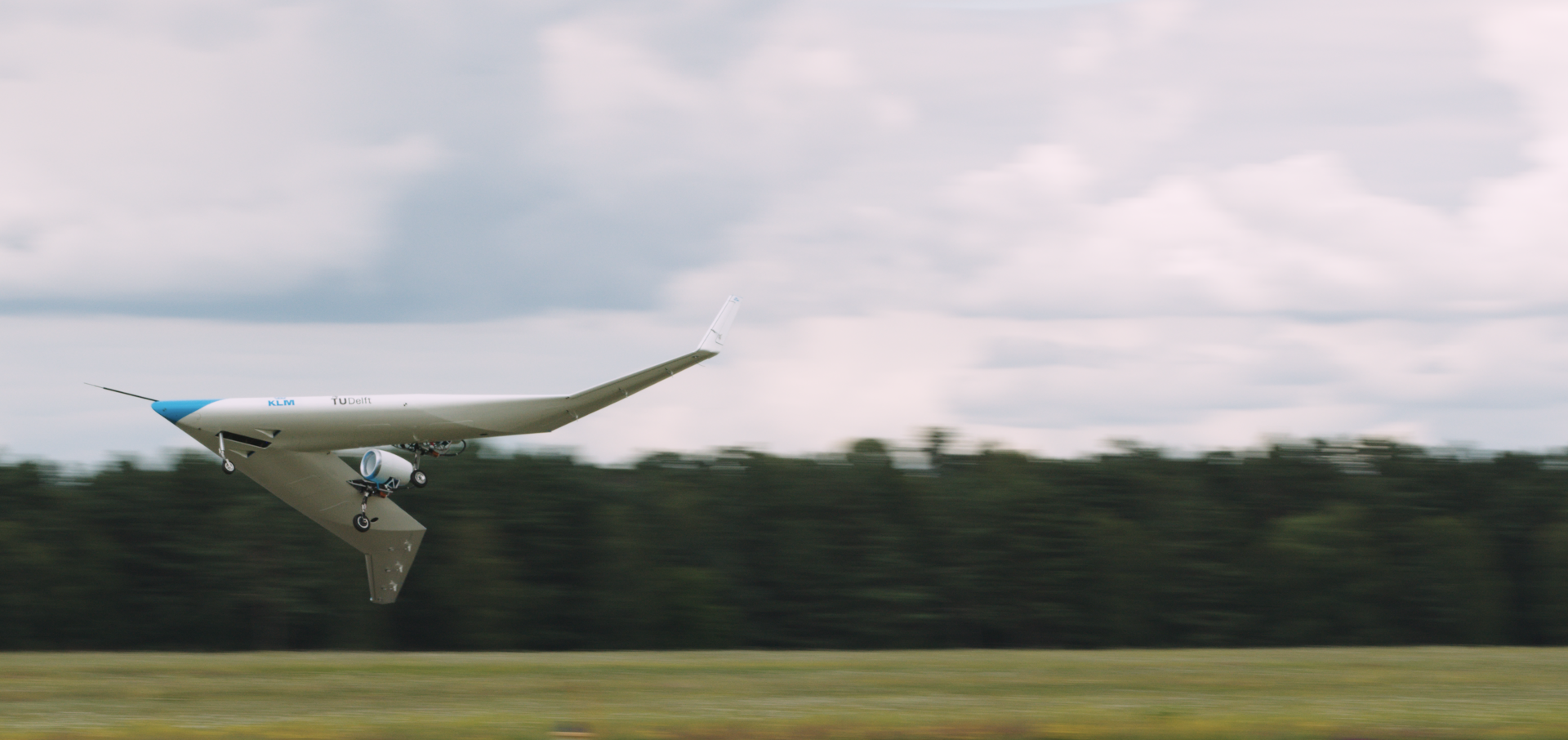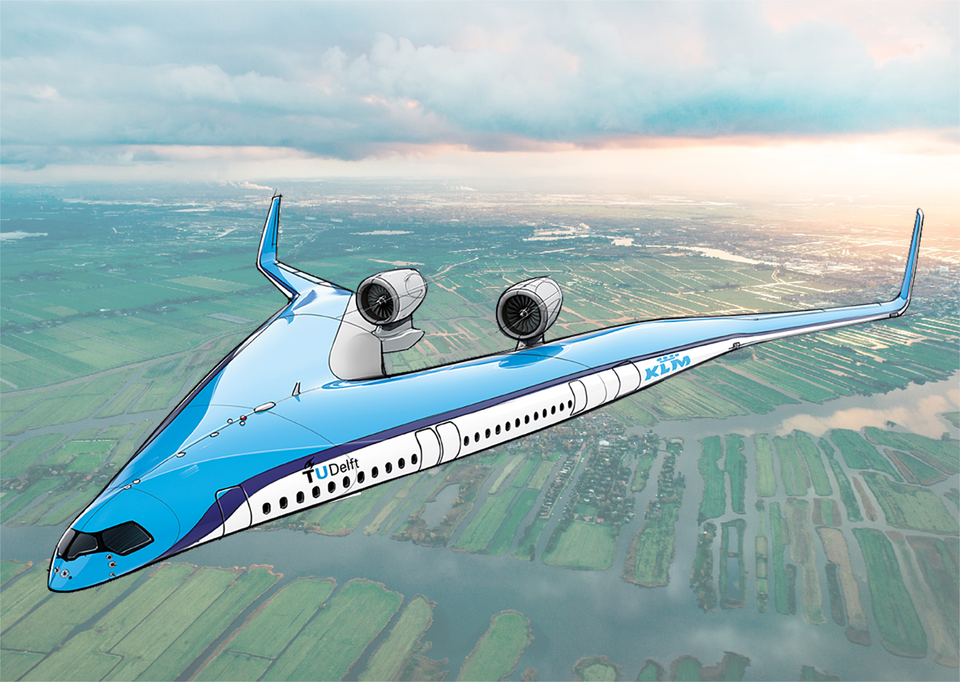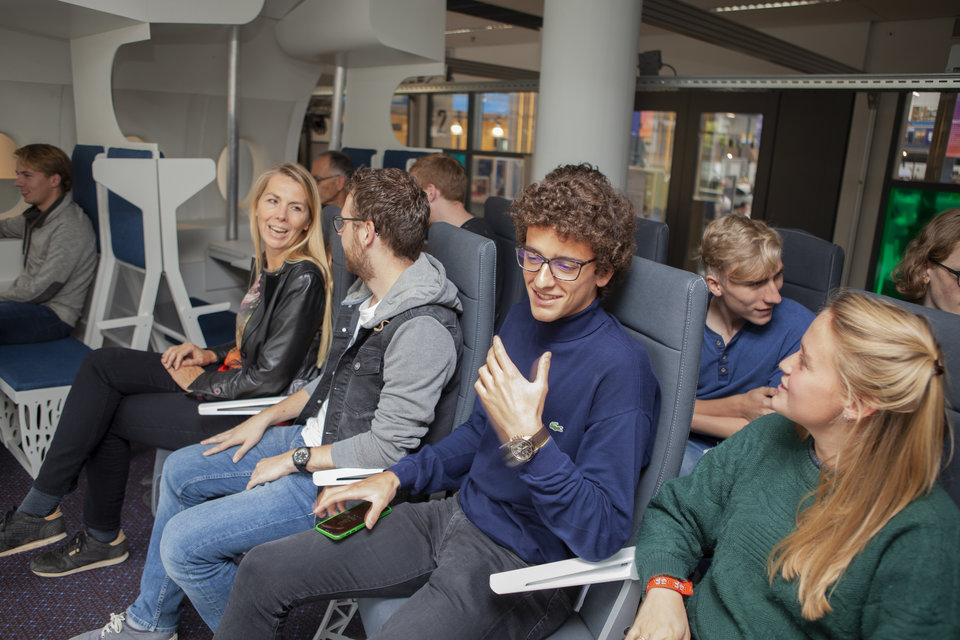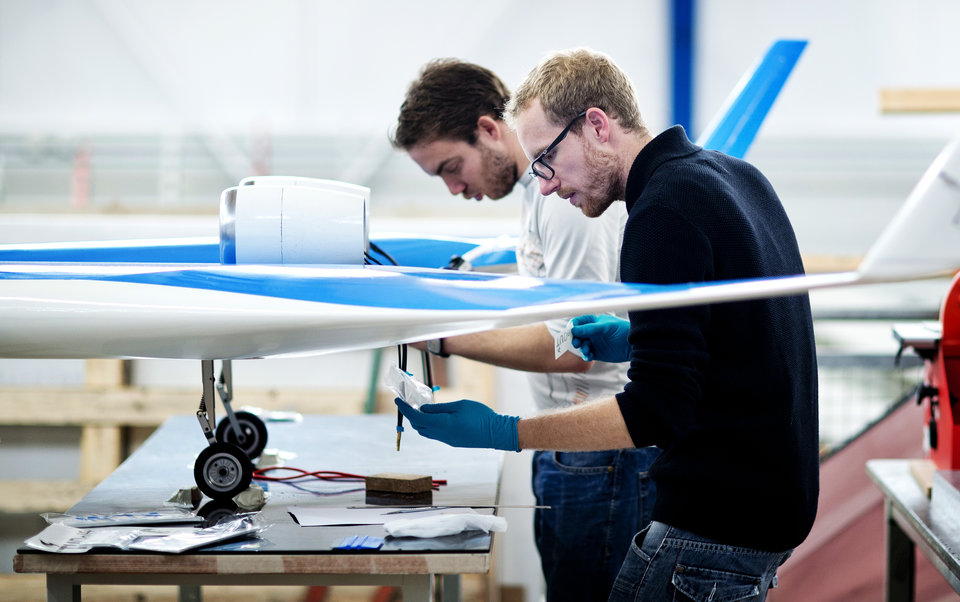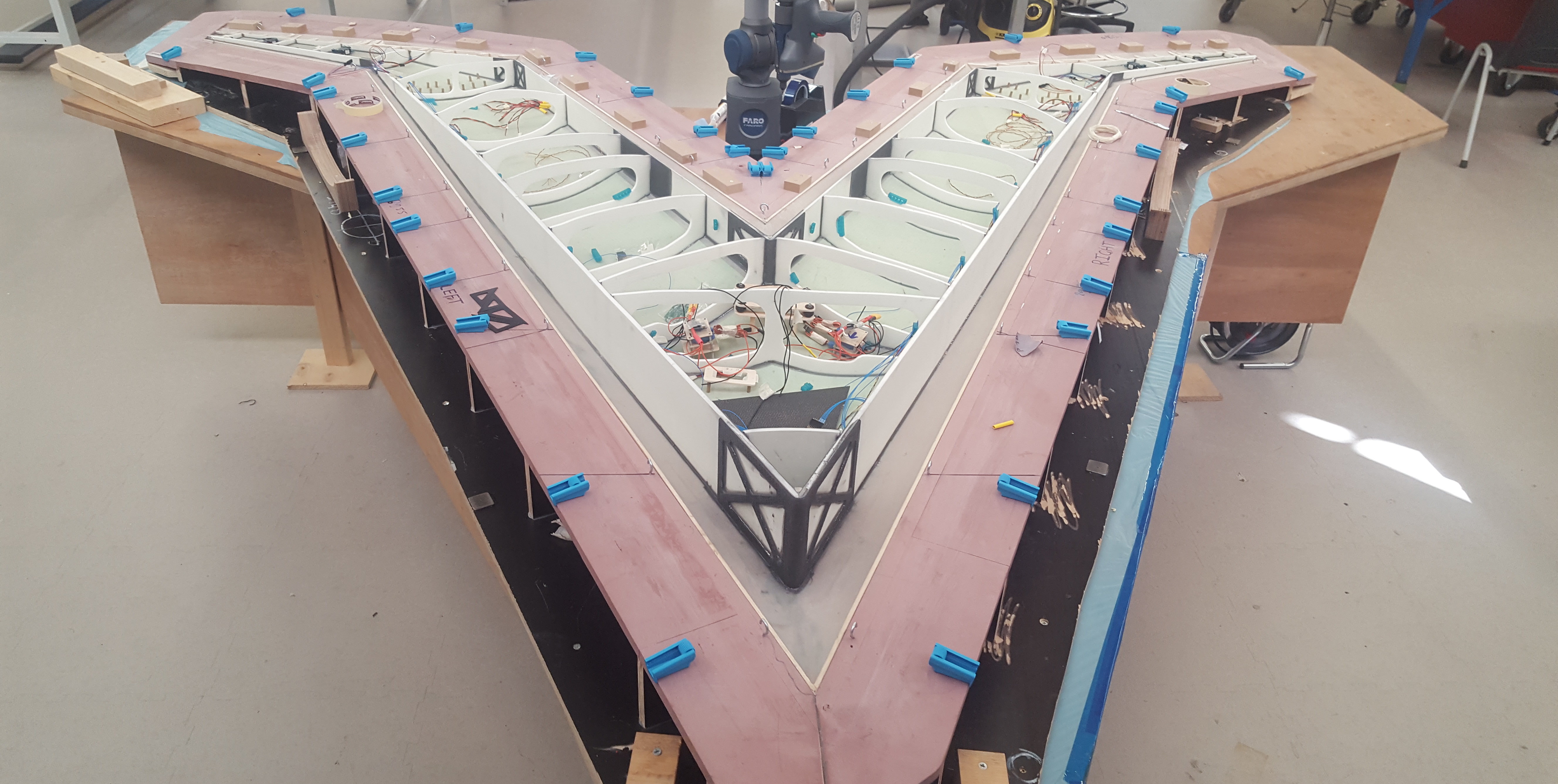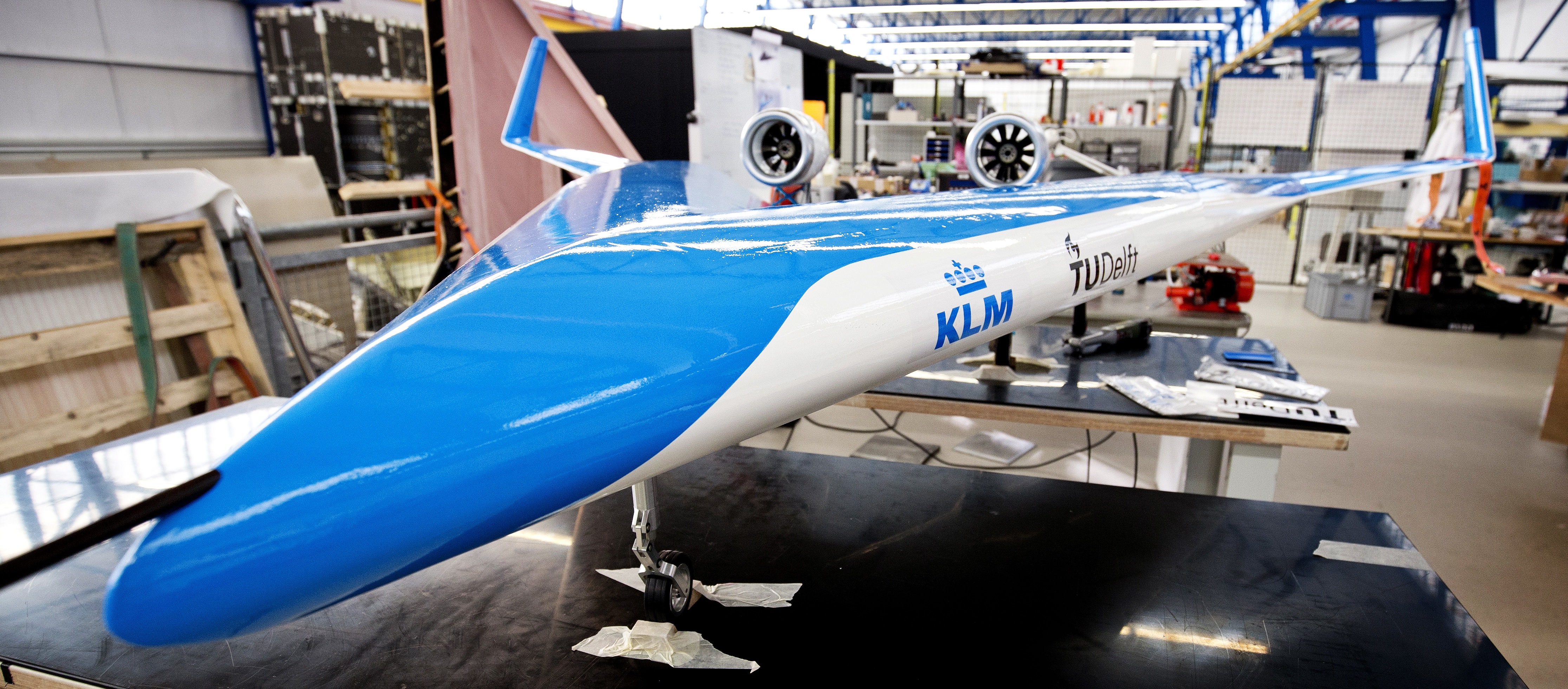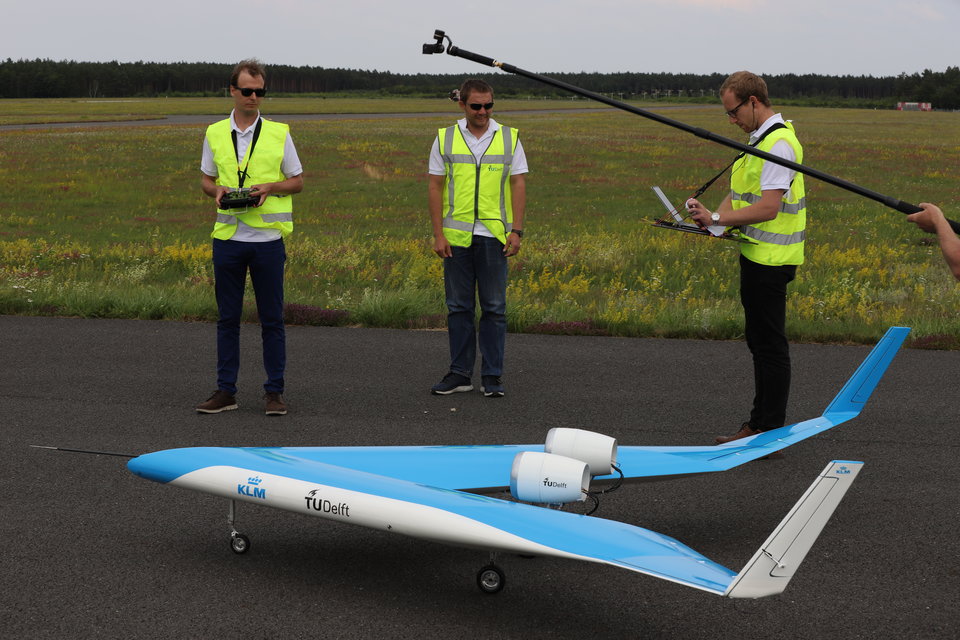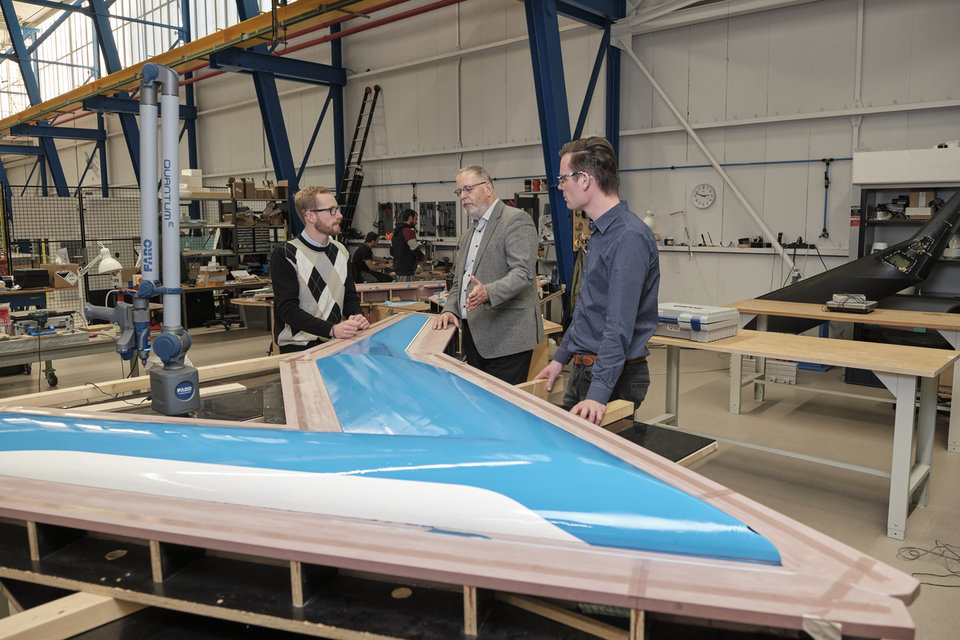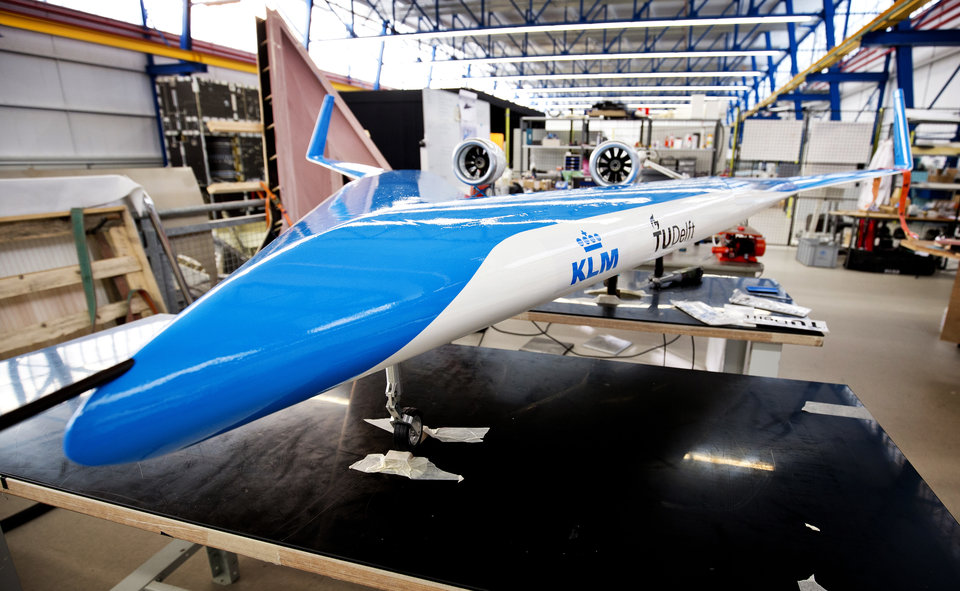In July 2020 a team of researchers, engineers and a drone pilot of TU Delft travelled to an airbase in Germany for a week of test flight, together with a team from Airbus. That’s where the successful maiden flight of the scaled flight model took place.
Flying and collecting data
PhD candidate Nando van Arnhem is the drone pilot of the project team. He controlled the scaled flight model via radio link. His task: take-off, fly a number of test manoeuvres and approaches until the batteries are nearly empty and land. The goals were:
- To show that the aircraft can perform a sustained flight based on predicted flight mechanical behaviour.
- To obtain an initial data set on its flight characteristics.
And Nando succeeded. The scaled model made a successful maiden flight.
Results
The flight generated a lot of interesting data and knowledge, such as:
- Rotation on take-off was performed easily and occurred at a speed of 80 km/h. The plane’s thrust was good and flight speeds and angles were as predicted.
- The centre of gravity of the aircraft was located slightly more towards the rear than had been calculated in advance. For the test flight the team put extra weight into the nose and placed the landing gear a little bit further to the front of the aircraft. If the centre of gravity isn’t in the right location, the aircraft can become unstable.
- During the test week the team has had to repair the antenna to improve the telemetry.
- The current design shows ‘wobbling’, in a technical term, Dutch Roll. That makes it difficult to keep the wings level and caused the aircraft to have a somewhat rough landing. Aerodynamic calculations had predicted this behaviour, but now that is has been demonstrated in a real flight, the team will be able to adjust the aircraft accordingly.
What’s next?
With the collected data from the first flight, the team will be able to make an aerodynamic model of the scaled flight model. This model makes it possible to calculate exactly in what ways the scale model will need to be adapted. The team will also prepare the aircraft for new flight tests. For this, they will for example need to repair the nose landing gear.
Why is testing with scaled flight models important?
Test flights involving scaled flight models is important, because you only really know how an aircraft design performs if you fly it in dynamic circumstances. Tests in a wind tunnel are also important, but these only give a static picture. Also: by flying an aircraft design you can show that the design is not just promising on paper.
Building the scale model
- Took around 1,5 years from viable concept to maiden flight of the scaled flight test model.
- The Flying-V-team built the scale model in-house with assistance from composites experts of the university.
- Some components, in particular some metal parts of the landing gear, had to be custom made by other suppliers.
- The scale model has a combination of commercial and custom-made in-house systems to control the plane and measure all of the relevant flight data.
The Flying-V team
Technical project leader: Dr. Roelof Vos, Assistant Professor of Flight Performance and Propulsion, chief engineer Malcom Brown, composites expert Frank van Wissen, electronics expert Alberto Ruiz Garcia, CAD designer Daniel Atherstone and two master's students. PhD student Nando van Arnhem is the certified drone pilot.
